Equipment

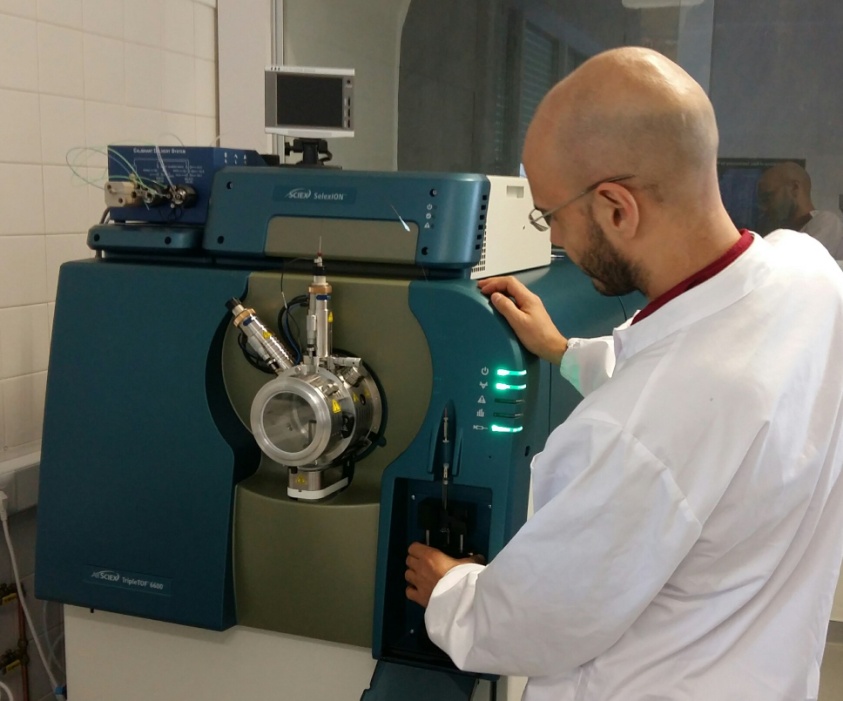 TripleTOF combined with SelexION™ Technology
TripleTOF combined with SelexION™ Technology
SCIEX, model 6600
The new SCIEX TripleTOF 6600 system is the top performing TripleTOF in the market. It is a high performance system with enhanced reproducibility that can detect virtually every peptide in every run when executing SWATH Acquisition 2.0. It offers broader linear dynamic range (greater than 5 orders), wide Q1 mass range (isolation for ions up to 2250 m/z), enhanced mass accuracy stability, and superior mass resolution and speed (100 MS/MS per sec; 30,000 high-resolution TOF MS/MS mode). Combined with SWATH Acquisition 2.0 it can deliver high-resolution quantification and rapid profiling. Comprehensive qualitative extrapolation is possible with MS/MS acquisition and with a single injection. The complete digital archive obtained from the single injection can be interrogated multiple times (data independent algorithm). The AB SCIEX SelexION™ Technology, “especially in combination with mass spectrometry, has become a powerful separation tool, improving data quality in the quantitation and characterization of challenging biological samples”.
It can be “used in a wide variety of applications in omics research and biomarker discovery”.
ABSciex TOF/TOF 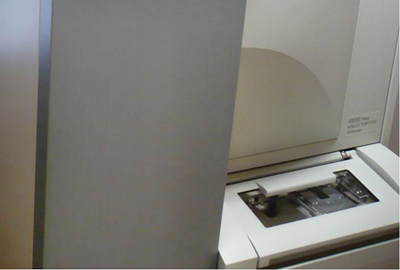
APPLIED BIOSYSTEMS, model 4800
MALDI-TOF/TOF is a high-throughput tandem time-of-flight (TOF) MS/MS system with soft ionization (MALDI - matrix-assisted laser desorption/ionization). Maldi User Guide
For analysis in the MALDI-TOF/TOF, the samples are co-crystallized with an organic matrix and then ionized by the action of a laser. After ionization the charged particles of the analyte fly through the TOF and the mass-to-charge ratio of the different components is determined.
Sample analysis can be performed using linear mode for analytes with molecular weights above the 4000 Da or in reflector MS mode for analytes below the 4000 Da. Samples previously analyzed in reflector MS mode can be further analyzed by MSMS mode in order to obtain a fragmentation pattern.
The MALDI-TOF/TOF is mainly used for protein identification, intact mass measurements and purity profile determination. This MS system can also be coupled (off-line) to a nanoLC-Spotter system for previous separation of complex samples.
The system is easily operated and therefore the UniMS may provide training for independent users if the workload justifies.
API-LINEAR ION TRAP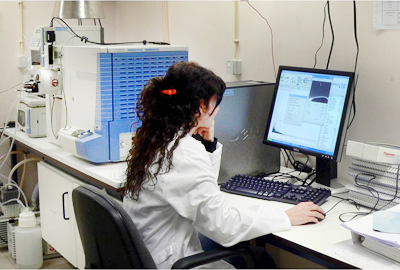
THERMOFINIGAN, model LTQ
Linear trap mass analyzer, coupled to an HPLC with a micro-autosampler (THERMOFINIGAN, MODEL SURVEYOR and MICRO-AS). Two soft ionization sources are available for regular and very small sample amounts: ESI and NANO-ESI SOURCE. ESI User Guide
The LTQ can be used for sample direct infusion, but is mainly used when coupled to an HPLC (microAS, Thermofinnigan) or to a nano-flow LC system (Easy nanoLC, ThermoFinnigan) for previous complex sample separation. This MS has soft ionization for conventional and nano flow rates (ESI and nanoESI). The LTQ is capable of MSn analysis, which can fragment molecules (MS/MS) numerous times, allowing the identification and characterization of for example post-translational modifications of proteins/peptides.
This MS equipment is mainly used in assays of several types of molecules, namely mixtures of proteins, peptides, oligosaccharides, lipids, and organic molecules. It is also used in assays of relative quantification.
API-ION TRAP 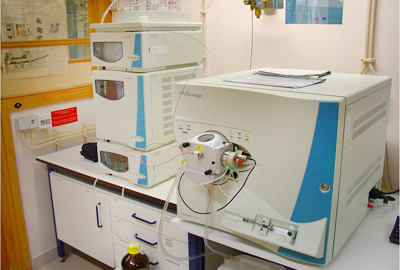
THERMOFINIGAN, model LCQ
This is an ion trap mass analyzer, coupled to an HPLC, THERMOFINIGAN model SURVEYOR. This ion trap MS can be used for sample direct infusion or coupled (on-line) to an HPLC system (Surveyor, Thermofinnigan) for previous separation of complex samples. ESI User Guide
The LCQ can use soft- (ESI), or hard-ionization (APCI). This MS system is mainly used for molecular mass and fragmentation pattern determination of proteins, peptides, organic and organometallic compounds.
API-ION TRAP
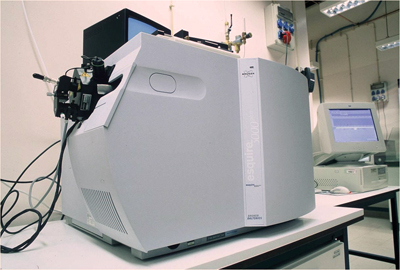 BRUKER, model ESQUIRE 3000+
BRUKER, model ESQUIRE 3000+
This is a direct infusion ion-trap that can be coupled to soft (electrospray ionization - ESI or nano ESI) or chemical (APCI, Atmospheric Pressure Chemical Ionization) ionization sources. This equipment is used mostly for characterization of biomolecules and small molecules synthesised by ITQB/iBET research groups. ESI User Guide







